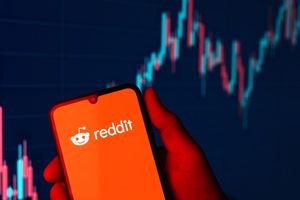
The U.S. economy currently presents a complex and often contradictory picture, leaving economists and policymakers debating whether the nation is headed for a "soft landing" or a more severe recession. Recent economic indicators offer a mixed bag of signals, highlighting both underlying resilience and emerging vulnerabilities. This confluence of conflicting data points—from a softening labor market and significant job revisions to robust corporate profits and accelerating business activity—creates an environment of profound uncertainty, making the path of the U.S. economy a subject of intense scrutiny and debate.
The debate intensifies as the labor market, a traditional bellwether of economic health, shows signs of cooling, while other sectors demonstrate remarkable strength. The implications of these mixed signals are far-reaching, affecting everything from consumer confidence and investment strategies to the Federal Reserve's monetary policy decisions. Understanding these dynamics is crucial for businesses, investors, and the general public as they navigate the evolving economic landscape.
The Shifting Sands of Economic Data: What Happened and Why It Matters
Recent economic data has painted a nuanced, and at times, perplexing picture of the U.S. economy. A significant point of concern emerged from the labor market, traditionally a strong pillar of post-pandemic recovery. In July 2025, the U.S. economy added a lower-than-anticipated 73,000 jobs, falling considerably short of economists' forecasts. This figure alone would be cause for pause, but it was compounded by surprisingly large downward revisions to previous months' employment data. Specifically, May and June 2025 figures were collectively slashed by a significant 258,000 jobs. These revisions were described by analysts as "larger than normal" and "atypical outside of labor market turning points (i.e., recessions)," raising red flags about the underlying health of the job market. While the national unemployment rate remained low at 4.2% in July, a slight increase from June, the labor force participation rate also saw a decline, suggesting that the uptick in unemployment might partly reflect fewer people seeking work rather than a sharp rise in job losses. Furthermore, specific sectors, such as manufacturing and federal government, experienced job losses, and unemployment among young IT specialists has notably risen.
This softening in the labor market contrasts sharply with other robust economic indicators. Corporate earnings for the second quarter of 2025 were remarkably strong, with approximately two-thirds of S&P 500 companies reporting results and an impressive 82% exceeding earnings predictions—the highest rate since Q2 2021. Key sectors like technology and finance demonstrated significant resilience, driven by investments in artificial intelligence and robust trading activity. Adding to the positive outlook, the latest flash Purchasing Managers' Index (PMI) data for August 2025 indicated an acceleration in U.S. business activity. The Composite PMI rose to an eight-month high of 55.4, marking the 31st consecutive month of growth and signaling the strongest pace of expansion so far this year. This was accompanied by increased hiring across both manufacturing and service sectors, suggesting that businesses are still confident enough to expand their workforce.
The timeline of these events highlights a period of increasing divergence in economic signals. Throughout late 2024 and early 2025, the narrative largely centered on a resilient labor market and persistent inflation, leading to expectations of continued interest rate hikes by the Federal Reserve. However, as mid-2025 approached, the employment data began to show cracks, culminating in the July report and its significant revisions. Simultaneously, corporate earnings reports began to surprise on the upside, and PMI data indicated renewed business vigor. Key players involved in this economic narrative include the Federal Reserve, whose monetary policy decisions are heavily influenced by these indicators; corporate executives, whose earnings reports reflect the health of their respective sectors; and, of course, the American consumer, whose spending habits ultimately drive a significant portion of economic activity. Initial market reactions have been volatile, with investors grappling to interpret the conflicting signals, leading to swings in equity markets and bond yields as they weigh the probabilities of a soft landing versus a recession.
Navigating the Crosscurrents: Potential Winners and Losers
In an economic environment characterized by such conflicting signals, identifying clear winners and losers becomes a complex exercise. However, certain sectors and companies are better positioned to either thrive amidst the resilience or weather the potential downturn.
On the "winner" side, companies that have demonstrated strong corporate earnings and are benefiting from secular growth trends appear well-insulated. The technology sector, particularly those involved in artificial intelligence (AI) and cloud computing, continues to show robust performance. Companies like NVIDIA (NASDAQ: NVDA), Microsoft (NASDAQ: MSFT), and Amazon (NASDAQ: AMZN), which are at the forefront of AI innovation and cloud infrastructure, are likely to continue seeing strong demand for their products and services, irrespective of minor economic fluctuations. Their ability to exceed earnings expectations, as seen in Q2 2025, suggests a fundamental strength driven by technological advancement and enterprise adoption. Similarly, the financial sector, particularly large diversified banks like JPMorgan Chase (NYSE: JPM) and Bank of America (NYSE: BAC), could benefit from robust trading activity and potentially higher interest rate environments, provided the economy avoids a deep recession. Their strong balance sheets and diverse revenue streams offer a degree of resilience. Furthermore, companies in the services sector, as indicated by the strong Composite PMI, that cater to resilient consumer spending or business-to-business services, may also continue to perform well.
Conversely, sectors highly sensitive to consumer discretionary spending or those heavily reliant on a robust labor market could face headwinds. The manufacturing sector, which has already seen job losses, could be vulnerable if economic activity slows further. Companies involved in durable goods manufacturing or those with significant exposure to international trade might experience reduced demand. Retailers, especially those selling non-essential goods, could also be impacted if consumer confidence wanes due to job market uncertainties or inflationary pressures. Companies with high debt loads or those that have not managed to significantly improve their profitability during the recent boom might find themselves in a precarious position if credit conditions tighten or demand softens. The real estate sector, particularly residential construction, could also face challenges if rising interest rates and a cooling job market deter potential homebuyers.
The mixed signals also create a challenging environment for smaller businesses and startups. While larger, established companies with strong balance sheets can often absorb economic shocks, smaller entities may struggle with reduced access to capital, tighter credit conditions, and decreased consumer spending. Their ability to adapt quickly to changing market conditions will be crucial for survival. Ultimately, companies with strong fundamentals, diversified revenue streams, and a clear competitive advantage are best positioned to navigate the current economic crosscurrents, while those with weaker financial health or high sensitivity to economic downturns may face significant challenges.
Industry Impact and Broader Implications
The current economic landscape, characterized by conflicting indicators, has profound implications across various industries and extends to broader policy considerations. This event fits into a larger narrative of post-pandemic economic recalibration, where supply chain disruptions, inflationary pressures, and aggressive monetary policy tightening have created an unprecedented environment.
The most immediate industry impact is felt in the labor market. The downward revisions to job growth and the lower-than-anticipated July figures suggest a significant cooling, particularly in sectors like manufacturing and government. This could lead to a re-evaluation of hiring strategies across the board, with companies potentially slowing down recruitment or even implementing targeted layoffs. For industries that have struggled with labor shortages, this might offer some relief in terms of talent availability, but it also signals a potential weakening of consumer demand if unemployment rises more broadly. The tech sector, despite strong earnings, has already seen some targeted layoffs, particularly among younger IT specialists, indicating that even high-growth areas are not entirely immune to economic shifts.
The strong corporate earnings, particularly in technology and finance, highlight a growing divergence within the economy. While some sectors are thriving due to innovation (e.g., AI) or market conditions (e.g., trading activity), others are showing signs of strain. This could exacerbate existing inequalities, with highly skilled workers in booming sectors continuing to command high wages, while those in struggling industries face job insecurity. This divergence also has ripple effects on competitors and partners. For instance, robust performance by cloud providers like Amazon Web Services (AWS) (part of Amazon (NASDAQ: AMZN)) and Microsoft Azure (part of Microsoft (NASDAQ: MSFT)) benefits their ecosystem of software developers and service providers, while a slowdown in manufacturing could hurt suppliers of raw materials and industrial components.
From a regulatory and policy perspective, the mixed signals present a significant challenge for the Federal Reserve. The central bank's dual mandate of maximizing employment and maintaining price stability becomes incredibly difficult when the labor market shows signs of weakening while inflation remains a concern (though not explicitly detailed in the provided research, it's an underlying context for Fed policy). The strong PMI data might give the Fed more leeway to maintain a hawkish stance, but significant job losses could pressure them to consider rate cuts sooner than anticipated. Furthermore, the long-term effects of past fiscal policies, such as the Tax Cuts and Jobs Act (TCJA) of 2017, are also under scrutiny. With many individual tax cut provisions set to expire at the end of 2025, their potential removal or extension could introduce further complexities, potentially dragging on future growth if not financed prudently. This creates a political and economic tightrope walk for policymakers.
Historically, periods of conflicting economic data often precede significant shifts. Comparisons can be drawn to periods in the late 1990s or early 2000s, where strong technological growth coexisted with other economic vulnerabilities. The key difference now is the unprecedented level of global interconnectedness and the lingering effects of a global pandemic, which add layers of complexity not present in previous cycles. The current situation underscores the difficulty of predicting economic trajectories in a rapidly evolving global landscape.
What Comes Next
The immediate future of the U.S. economy hinges on how these conflicting signals resolve themselves. In the short term, all eyes will remain on upcoming economic data releases, particularly subsequent jobs reports, inflation figures, and further corporate earnings. A continued trend of downward job revisions or a significant uptick in the unemployment rate would strongly lean the narrative towards a recessionary outlook, potentially forcing the Federal Reserve to pivot its monetary policy more aggressively towards easing. Conversely, if the strong corporate earnings and accelerating business activity, as indicated by the PMI, continue to hold up, it could reinforce the soft landing narrative, suggesting that the labor market is simply normalizing rather than collapsing.
For businesses, strategic pivots and adaptations will be crucial. Companies that have enjoyed robust growth might need to re-evaluate their expansion plans and focus more on efficiency and cost control. Those in vulnerable sectors may need to explore diversification strategies or strengthen their balance sheets to withstand potential downturns. Supply chain resilience, which became a major focus during the pandemic, will remain paramount, as any further economic shocks could expose vulnerabilities. Companies heavily reliant on consumer discretionary spending might need to adjust their product offerings or marketing strategies to appeal to a more cautious consumer base.
Market opportunities and challenges will emerge from this uncertainty. If a soft landing materializes, sectors like technology and finance, which have shown resilience, could continue to lead the market. Investors might seek out companies with strong free cash flow, low debt, and a history of consistent dividends. However, if a recession becomes more likely, defensive sectors such as utilities, consumer staples, and healthcare might become more attractive as investors seek stability. The bond market will also be a key area to watch, with yields reacting sharply to any shifts in economic outlook and Federal Reserve policy expectations.
Potential scenarios range from a true soft landing, where inflation gradually subsides without a significant economic contraction, to a mild recession, characterized by a short period of negative GDP growth and a moderate increase in unemployment. A more severe recession, while less likely given some of the current strengths, cannot be entirely ruled out if multiple negative factors converge. The outcome will largely depend on the interplay between monetary policy, consumer and business confidence, and unforeseen external shocks. The ability of the economy to absorb the impact of past interest rate hikes while maintaining some growth momentum will be the ultimate test.
Conclusion
The current state of the U.S. economy is a testament to its complex and often contradictory nature, leaving a definitive prognosis elusive. The surprisingly large downward revisions to employment data and the lower-than-anticipated job additions in July 2025 signal a clear cooling in the labor market, raising concerns about a potential recession. This softening is a critical takeaway, suggesting that the robust job growth seen in previous months may have been overstated and that the economy's capacity to absorb workers is diminishing.
However, this cautionary tale is balanced by compelling arguments for avoiding a recession. Strong corporate earnings in the second quarter of 2025, particularly in the technology and finance sectors, demonstrate underlying business resilience and profitability. The low unemployment rate, despite recent upticks, still indicates a relatively tight labor market, and the latest flash PMI data for August 2025 points to an acceleration in U.S. business activity and confidence, with increased hiring across both manufacturing and service sectors. These indicators suggest that while the labor market may be normalizing, the broader economy is not necessarily on the brink of collapse.
Moving forward, investors and policymakers should closely monitor several key indicators. The trajectory of inflation, the Federal Reserve's response to incoming data, and consumer spending patterns will be paramount. Any further significant deterioration in the labor market, coupled with a decline in corporate profitability, would strongly tilt the scales towards a recessionary outcome. Conversely, if inflation continues to moderate while business activity remains robust, the soft landing scenario becomes more plausible. The lasting impact of this period of mixed signals will likely be a heightened sense of economic uncertainty, requiring agility and careful strategic planning from businesses and investors alike. The coming months will be crucial in determining whether the U.S. economy can successfully navigate these crosscurrents and achieve a soft landing, or if it will succumb to the gravitational pull of a downturn.







